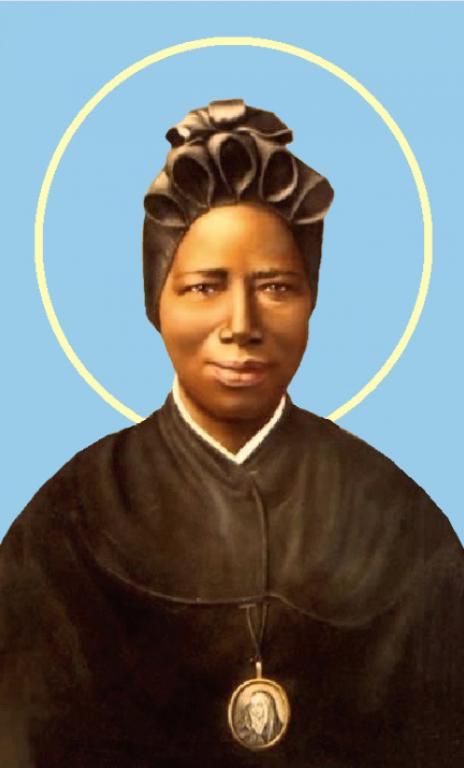I’m working on a project that has me writing very condensed descriptions of various saints, and I was struck today by this detail:
St. Paul Miki and companions are rightly remembered for their bravery during their forced march of 600 miles to crucifixion in Nagasaki. This is exactly the same length
St. Josephine Bakhita was forced to travel, barefoot, when kidnapped by slave traders at the age of nine.
And while many martyrs are remembered for enduring days of torture and persecution, Bakhita endured years of beatings, whippings, even ritual mutilation at the hands of various slave owners before becoming nanny to a wealthy Italian family and then claiming sanctuary in an Italian convent.
I’m not sure why the detail of the 600 miles struck me, except that it reminds me that while we are bound by time and chronology, Christ isn’t. Unlike the Japanese martyrs, Sr. Bakhita’s sufferings predated her conversion–she wasn’t suffering for the sake of a faith she didn’t yet know. And yet somehow her Christianity gave her a way to understand and make sense of her earlier trials.
Pope Benedict XVI wrote about St. Josephine Bakhita
in the encyclical Spes Salvi as an exemplar of the theological virtue of hope. Her faith, Pope Benedict writes, taught Bakhita that,
She too was loved, and by none other than the supreme “Paron”…What is more, this master had himself accepted the destiny of being flogged and now he was waiting for her “at the Father’s right hand.” Now she had “hope” —no longer simply the modest hope of finding masters who would be less cruel, but the great hope: “I am definitively loved and whatever happens to me—I am awaited by this Love. And so my life is good.” Through the knowledge of this hope she was “redeemed,” no longer a slave, but a free child of God. …Hence, when she was about to be taken back to Sudan, Bakhita refused…
And maybe this is the remarkable thing. The same hope, the hope of a life destined for the love of Christ, both gave St. Paul Miki the courage to face martyrdom and gave Bakhita the courage to claim a life free from slavery and abuse.
The same hope makes it possible to embrace both present persecution and past abuse as paths leading to eternity with Christ, a hope that tells us not only what we are destined for, but who we are.
And what we are is free.
Not only free to, like St. Paul Miki and companions, “resist the overbearing power of ideology and its political organs and, by their death, renew the world,” but also free to renew the world through living witness to this innate worthiness and freedom, as did St. Josephine Bakhita.

The same hope that taught the martyrs that no torment or suffering could injure their interior freedom or “separate [them] from the love of God,” also freed Bakhita to reject the lie that she, a child of God, could be claimed as mere property.
The Japanese martyrs walked 600 miles in witness to that freedom. The little girl we know as Bakhita walked 600 miles and lived as a slave before she could claim that freedom.
How far would I walk?
What would change in my life if I truly lived in that hope?
Image credit: Martyrdom of Paul Miki S.J., Jacob Kisai S.J., John Goto S.J. and P. Petrus Battista in Japan in 1596 via Wellcome Library, London. Image of St. Josephine Bakhita is in the public domain.


















